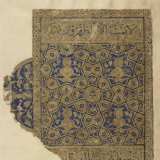History of surah Yaseen

Name
The first verse of it began with Yasin, and it was said that Yasin means calling God to his Prophet Muhammad, may God bless him and grant him peace.
Period of Revelation
The Messenger of God - may God bless him and grant him peace - recited Surah Al-Sajdah one day and recited it aloud. Then a group of Quraysh stood by him to silence him, and when they put their hands around his neck, their eyes were blinded. Then they began to ask the Messenger of God - God's prayer and peace be upon him - for help to get rid of what they were in, and he pleaded for them until what was with them was removed, whereupon God Almighty sent down his saying: (Ya, Seen. * By the wise Qur'an.), to his saying - the Almighty: (And it is all the same for them whether you warn them or do not warn them - they will not believe.), and none of them believed in that situation, and Abu Jahl threatened when he saw the Prophet - peace be upon him - to do and do, so God revealed his saying - the Exalted -: (Indeed, We have put shackles on their necks, and they are to their chins, so they are with heads [kept] aloft.), to his saying - the Almighty -: (so they do not see.), so that the Messenger of God - God's prayer and peace be upon him - stood before him and could not see him.
And the Almighty said, (And We have put before them a barrier and behind them a barrier and covered them, so they do not see.), and what is meant by the dam is the prohibition of the way of guidance, God bless him and give him peace -؛ One of them came and the Messenger was in prayer at that time. So the man heard the voice of the Prophet -peace be upon him- but did not see him, and another came to kill him, and it is said that it is Abu Jahl. He saw a tall figure coming towards him to kill him, so he got scared and turned back. So God Almighty sent down this verse, and the meaning is: We have covered them so that they do not see. That is, We have blinded them with the truth, concerning His saying - the Almighty: (Indeed, it is We who bring the dead to life and record what they have put forth and what they left behind, and all things We have enumerated in a clear register.), So the Messenger of God - God's prayer and peace be upon him - told them that their traces would be written down in their houses, so God Almighty sent down this verse, and the reason for the revelation of His saying - the Almighty: (And he presents for Us an example and forgets his [own] creation. He says, "Who will give life to bones while they are disintegrated?". That one of the polytheists was concerned with the greatness and the downfall and asked how to revive it; so God Almighty revealed the verse at the end of the Surah.
Theme and topics
Ibn Ashour said, "The Surah is based on establishing the mothers of the foundations of religion in the most eloquent and complete way, proving the message, the revelation, the miracle of the Qur'an and what is considered in the attributes of the prophets, and proving the destiny, the knowledge of God, the collection, the monotheism and the gratitude to the giver - and these are the foundations of obedience through faith and action. And from it branches the Shariah - and the proof of reward for good and evil, with the integration of evidence from horizons and souls with wondrous sophistication, so that this surah was worthy to be called (the heart of the Qur'an), because from its departments branch the arteries of the entire Qur'an.
Al-Fayrouz Abadi mentioned that the Surah contains a number of purposes, namely, "the confirmation of the command of the Quran, the message, the obligation to argue against the people of misguidance, setting an example and explaining the various proofs of the revival of the dead earth, the representation of night and day, the movement of the planets, the humiliation of the unbelievers at death, their confusion at the hour of resurrection, the happiness of the obedient believers and their stay in paradise, the distinction of the believer from the unbeliever on the day of resurrection, the testimony of the limbs against the sinners with their sins.